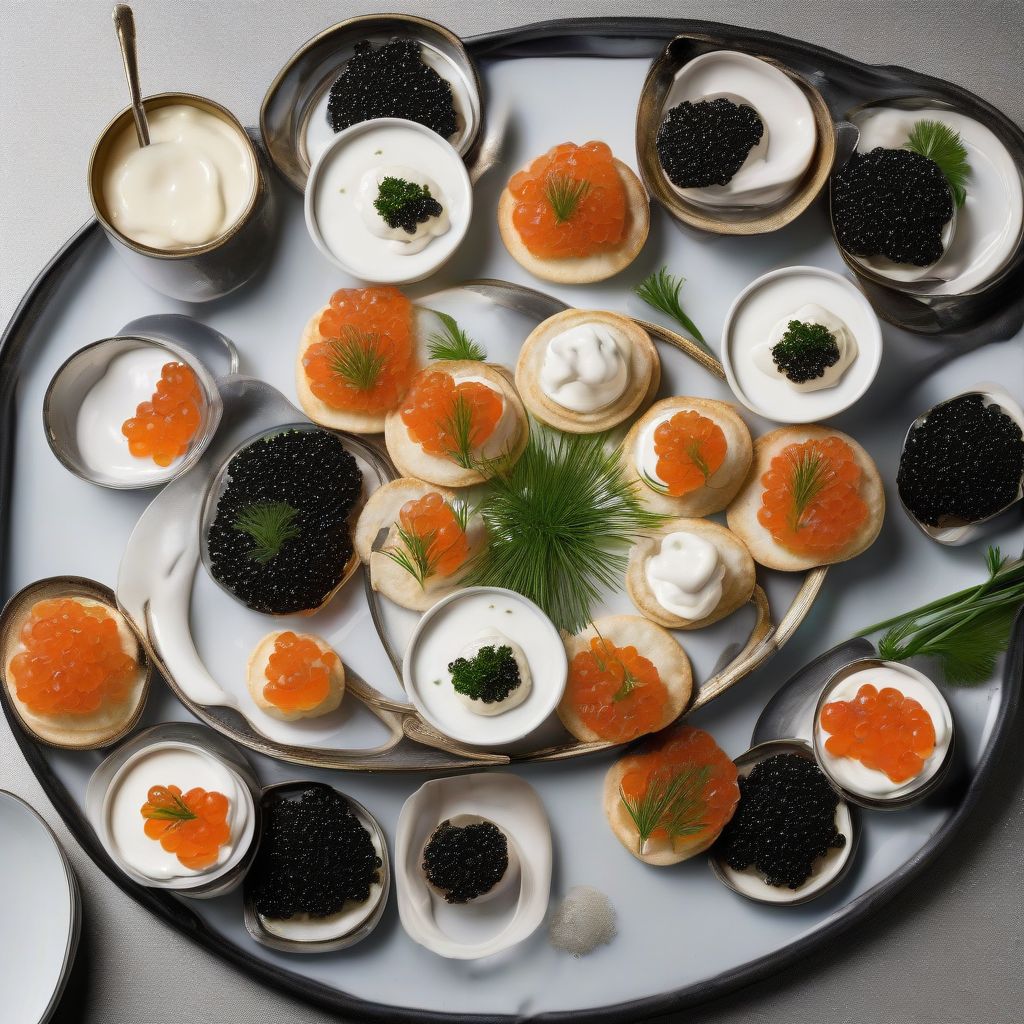Imagine this: you’re hosting an important dinner party, a celebration, or maybe it’s just a luxurious night in. You want to impress your guests with something truly special, a delicacy that speaks of elegance and refinement. What comes to mind? Caviar, of course. But with so many varieties available, how do you choose the perfect caviar to make your occasion unforgettable?
Choosing caviar can feel intimidating, like navigating a secret society of gourmet foods. But fear not, fellow food enthusiast! As a nutritionist and meal-prep coach, I’m here to guide you through the world of caviar, unveiling its secrets and helping you make a selection you’ll be proud of.
Understanding the Caviar Basics
Before we dive into the specifics, let’s demystify this luxurious treat. Caviar refers to the salt-cured roe (eggs) of sturgeon fish. The rarity of these fish, combined with the delicate harvesting process, contributes to caviar’s prized status.
Types of Caviar: Exploring the Options
The type of sturgeon determines the variety of caviar, each with its unique flavor profile and price point. Here are some of the most popular options:
1. Beluga Caviar: Hailing from the beluga sturgeon, this is the rarest and most expensive type of caviar. Known for its large, buttery pearls with a delicate, slightly salty flavor, Beluga caviar is the epitome of luxury.
2. Osetra Caviar: Sourced from the Osetra sturgeon, this caviar is prized for its complex, nutty flavor and a slightly firmer texture than Beluga. It often has a beautiful golden-brown to dark brown hue.
3. Sevruga Caviar: This variety comes from the Sevruga sturgeon and is the most readily available of the top three. It features smaller, gray-black pearls with a pronounced briny and intense flavor.
4. American Hackleback Caviar: A more sustainable and budget-friendly option, Hackleback caviar originates from the American Hackleback sturgeon. It offers a delightful burst of flavor, with a slightly firmer texture and a more earthy taste than some of its pricier counterparts.
Factors to Consider When Choosing Caviar
1. Occasion and Budget:
- Special celebrations or an extravagant touch: Beluga or Osetra caviar are excellent choices for these occasions.
- More casual gatherings or exploring caviar for the first time: American Hackleback or Sevruga caviar provide a delicious and more affordable introduction.
2. Flavor Profile:
- Delicate, buttery, and slightly salty: Beluga caviar
- Nutty, complex, and slightly firmer texture: Osetra caviar
- Briny, intense, and readily available: Sevruga caviar
- Earthy, firm, and a more sustainable option: American Hackleback caviar
3. Color and Size:
- Caviar pearls range in color from jet black to golden brown: The color can indicate the type of sturgeon and its rarity.
- Larger pearls are generally considered more desirable: However, size is subjective and often depends on personal preference.
4. Sustainability: If ethical sourcing is important to you, opt for caviar from sustainable fisheries. Look for certifications like CITES (the Convention on International Trade in Endangered Species of Wild Fauna and Flora).
Tips for Serving Caviar Like a Pro
Now that you’ve chosen your perfect caviar, here’s how to present it for an unforgettable experience:
- Keep it chilled: Caviar should be served very cold. Store it in the coldest part of your refrigerator until ready to serve.
- Use a non-reactive spoon: Avoid using metal spoons, as they can impart a metallic taste to the delicate caviar. Opt for mother-of-pearl, bone, or even plastic spoons.
- Less is more: Caviar is best enjoyed in small quantities to savor its unique flavor. Serve it as an appetizer on blinis (small, thin pancakes), toast points, or with crème fraîche and chopped chives.
 Caviar Platter
Caviar Platter
Frequently Asked Questions About Choosing Caviar
1. What is the best way to store caviar?
Store caviar in the coldest part of your refrigerator, ideally at a temperature between 28°F and 32°F. It’s best to consume caviar within a few days of opening for optimal freshness.
2. Can I freeze caviar?
Freezing caviar is not recommended, as it can damage the delicate texture of the pearls and alter the flavor.
3. What drinks pair well with caviar?
Traditional pairings include chilled vodka, champagne, or dry white wine. The crispness of these beverages complements the richness and saltiness of the caviar.
A Toast to Your Special Occasion
Choosing the right caviar for your special occasion doesn’t have to be daunting. By understanding the different types, considering your budget and preferences, and mastering a few serving tips, you can create a memorable culinary experience for yourself and your guests. Remember, the most important ingredient is the joy of sharing delicious food and creating lasting memories.
[amazon bestseller=”caviar”]
